‘The Revenant’ Film Review: A Movie That’s Exhausting—in a Good Way
Masterful cinematography is the key to Alejandro Gonzalez Inarritu’s brilliant saga of survival and vengeance.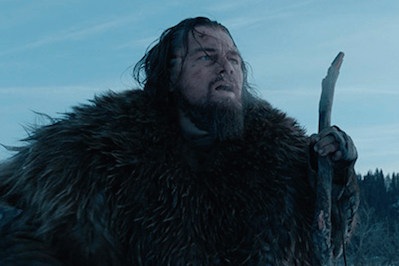 Twentieth Century Fox
Twentieth Century Fox
Twentieth Century Fox
I’ve always found the movies of Alejandro Gonzalez Inarritu to be exhausting in all the wrong ways: overlong and in-your-face (“Amores Perros”), often profoundly depressing (“Biutiful,” “21 Grams”), and sometimes too reliant upon a single technical gimmick (the remarkable single-shot cinematography of “Birdman”). That’s not to say I doubt his brilliance as a filmmaker—I absolutely do not; his new movie, the endurance-Western “The Revenant,” is exhausting in all the right ways.
An elemental revenge movie that channels the Yukon spirit of Jack London and James Fenimore Cooper as well as Great Northern whiteout survival movies like Sydney Pollack’s “Jeremiah Johnson,” Bruce Beresford’s “Black Robe” and Philip Kaufman’s masterly but almost forgotten debut “The White Dawn,” “The Revenant” offers this year’s most hostile on-film environment after Aleksey German’s equally snowbound (and exhausting) “Hard to Be a God.”
It opens in the unspoiled, almost Edenic American-Canadian borderlands in 1823, as a large party of white trappers prepares to load its winter harvest of pelts for the trip back downriver to the nearest trading post and fort. Almost Edenic, that is, because these pelts belong by right to the several American Indian tribes—Cree, Pawnee and Sioux—whose hunting grounds the white men are trespassing on for profit.
The most valuable member of their expedition is their guide, Hugh Glass (Leonardo DiCaprio), widowed husband of an Indian woman killed in a village massacre by British troops (presumably in Canada), and father to a teenage son by her, and thus a man who stands athwart the several cultures that clash hereabouts. He speaks the various tongues of Native Americans and knows their methods of survival in the icebound wastes, but he is commissioned to guide and protect the predatory white men.
After an opening that recalls the idyllic, virginal America of Terrence Malick’s “The New World” in its exquisite but malign landscapes and detailed sound-scapes (running water, wind, creaking frozen trees, birdsong), the affronted Native Americans take their revenge as the trappers are preparing to embark downriver. Horses thunder toward the camera, white men scatter or are clubbed to death from horseback or skewered with arrows that land with sickening thuds in their heads, necks or chests. Indians are unhorsed and slaughtered where they fall, and the harvest of pelts is mostly lost.
What makes this sequence so astounding is the camerawork of Inarritu’s regular cinematographer, Emmanuel Lubezki. Its combination of the contemplative and the headlong is key to the power of the whole movie. While arrows fly, guns blaze away and bodies are torn up, Lubezki’s Steadicam moves through the carnage as if in a dream, sometimes fast but sometimes with a trancelike Zen calm, slowly panning left or right just in time to catch some new moment of violence, or several simultaneously, seeing everything, always knowing what is about to happen and ready to witness it, always in the thick of the action but viewing it in a rueful and ruminative way, as if we are seeing things through the eyes of an unflappable, uncomprehending horse or wolf.
This may be the most astounding and kinetic battle sequence I’ve seen in a movie since the outwardly very different raid on the Vietnamese village in “Apocalypse Now.” There isn’t a helicopter or a hand grenade in sight here, obviously, and no “Ride of the Valkyries” on the soundtrack, but that same, weirdly exhilarating feeling of escalating violence and brute carnage can be found here as well. Like much of the rest of “The Revenant,” it will push you back into your seat as you struggle to absorb its intensity and power and leave you gasping for breath in its aftermath.
Of 33 men, only nine are left alive, mainly through the resourcefulness and warrior chops of Glass. Forced now to make their way home by the much more punishing and hostile land route, with Indians in pursuit, the party must rely on Glass to lead them home. The one wild card in the group is an ungovernable ex-criminal and trapper, Fitzgerald (Tom Hardy), a man constructed entirely of greed and guile, as tough as Glass (his skull bears the scars of a failed Indian scalping) but utterly amoral and self-centered, incapable of loyalty to the group’s leader, Andrew Henry (Domhnall Gleeson).
The next day, while scouting for the party with his teenage son, Glass is attacked by a bear after coming between her and her cubs. Here is another sequence that’s almost unendurably violent, as the bear throws Glass around, slashes at his back, chest and, finally, his throat, then toys with his inert body, roaming away briefly before returning to administer yet more punishment until a barely conscious and immobilized Glass is finally able to kill her with knife and rifle.Left behind by the main party to nurse Glass toward what seems like his inevitable death, Fitzgerald instead murders Glass’ son and then shoots Glass and buries him alive, pretending to his unknowing partner, Bridger (Will Poulter), that the Indians have finished them off.
But this is a revenge Western, and Glass does not die, despite his horrific injuries. He lies for days half buried, until finally he can rouse himself to perform some nasty field surgery on those wounds—including, most harrowingly, cauterizing his neck injuries with gunpowder. Scarcely able to stand, riven by the bone-shattering cold, utterly alone, unarmed and horseless, he starts his journey back to civilization, and vengeance.
The parallel odysseys of killer and avenger take us across a magnificent albeit minatory and godforsaken white landscape of hostile tribes, a predatory band of French trappers (they’ve kidnapped the daughter of a Cree chieftain for use as a sex slave, but the chief mistakenly blames Glass’ group) and the fearsome elements themselves. Inarritu and Lubezki keep the frame packed with striking and somber images: a huge, daunting pyramid of buffalo skulls; a herd of live buffalo, one of whose number is beset by wolves; and, in one flashback to the massacre that killed Glass’ wife, we see a small green bird fly out of the death wound in her throat as, presumably, her spirit leaves her.
As with all the movies he works on, Lubezki is as good as the co-auteur of “The Revenant.” In the past decade he has set himself challenges in cinematography whose results are among the most breathtakingly virtuoso sequences and movies of the new millennium. It was he who masterminded the hair-raising, 10-minute, single-take reverse van chase and the magnificent, long-take final battle sequences in Alphonso Cuaron’s “Children of Men.” The quantum leap in CGI technology that “Gravity” represented was also his work, ditto the “Rope”-like faux single shot that made up “Birdman,” his last collaboration with Inarritu. His signature is as indelible and as important to the films he makes as Dutch cinematographer Robby Mas Du’s is to the early work of Wim Wenders or to Jim Jarmusch’s “Dead Man,” which, in its silvery-daguerreotype luminosity, is a kind of brother-movie to “The Revenant.”
Here, Lubezki closely echoes his work for Malick on “The New World,” in which he used hand-held cameras for the untamed green breast of virgin America, while using locked-down, grounded camerawork for the sequences set in the fiercely trimmed, regimented and well-gardened Old World of England. In “The Revenant,” however, he and Inarritu set themselves the challenging task, reminiscent of Stanley Kubrick on “Barry Lyndon,” of working with only natural and available light—the sun, firelight, candlelight, and nothing else. The results are, of course, remarkable—great fields of white dotted with bursts of green and brown, and a baleful sky ever changing above the brutalized characters. One can only assume that Lubezki will win a third Best Cinematography Oscar in succession (he won previously for “Gravity” and “Birdman”).
The camerawork would probably count for a lot less if the performers were not equal to what was obviously a very demanding shoot. DiCaprio stretches himself almost beyond endurance for his role, spending time in freezing rapids, suffering blizzards, and at one point disemboweling his dead horse, which he has just ridden off a cliff, before stripping naked and crawling inside its carcass for warmth. As his antagonist Fitzgerald, Tom Hardy turns in another of his total-immersion Method performances, using a guttural growl and a thick, phlegmy accent rich in static and menace. Coming after his distinctly different, uniformly excellent performances in “Locke” and “The Drop” and his double performance as both Kray twins in Brian Helgeland’s otherwise disposable gangster movie “Legend,” Hardy’s feral and amoral work in “The Revenant” reaffirms him as the finest British actor of his generation, and one of the finest, full stop.
Violence, endurance, vengeance—these are the things that exhaust us in “The Revenant,” not the emotional and moral exhaustion Inarritu imposes upon us in his other movies. Here, everything feels hard-earned and honestly fought for, not forced upon us to endure (although it is certainly an endurance test). Inarritu has come close before but has never made a movie as organic, unforced and well integrated as this one, nor as thrilling and grimly beautiful. I tend to strictly ration my usage of the following word, but here it is fully warranted:
Masterpiece.
Independent journalism is under threat and overshadowed by heavily funded mainstream media.
You can help level the playing field. Become a member.
Your tax-deductible contribution keeps us digging beneath the headlines to give you thought-provoking, investigative reporting and analysis that unearths what's really happening- without compromise.
Give today to support our courageous, independent journalists.

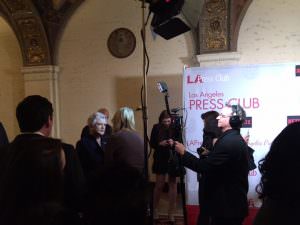

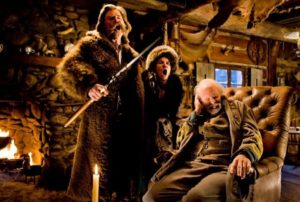
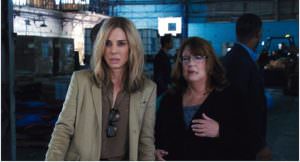
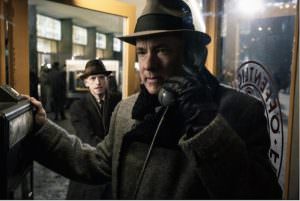
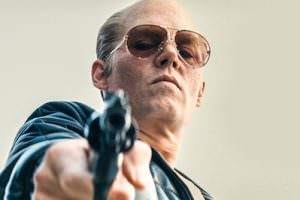


You need to be a supporter to comment.
There are currently no responses to this article.
Be the first to respond.